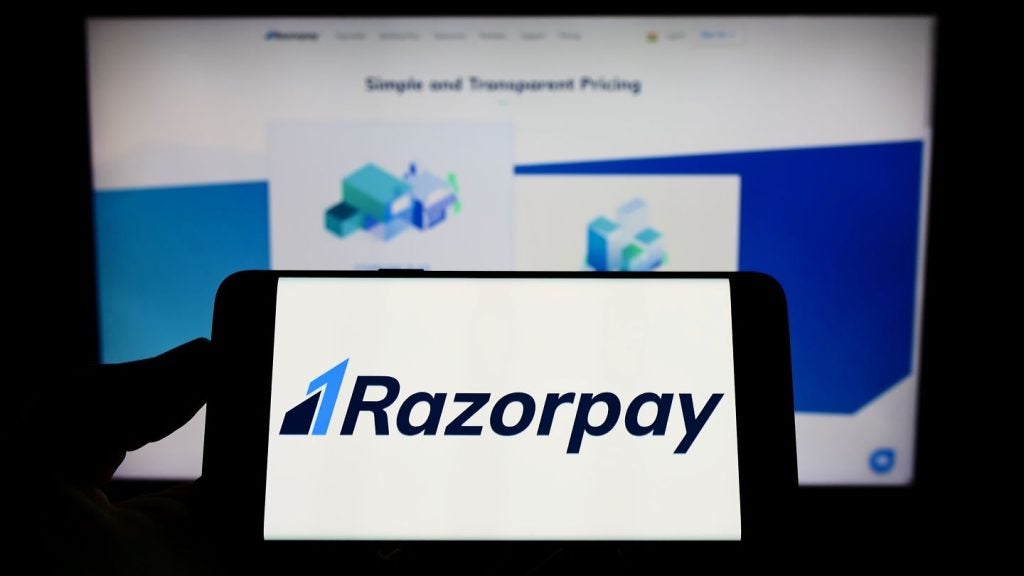Afghanistan hasn’t seen the levels of mobile money adoption that Kenya has with M-Pesa. Mobile money
is still embryonic and Afghanistan remains a cash-based society. But the government, mobile network
operators (MNOs), and NGOs are working to foster adoption of mobile money, Robin Arnfield reports
Afghanistan is one of the least banked countries in the world, with the World Bank estimating that only 10% of the population aged over 15 had a bank account in 2014. However, around 72% of the population have mobile phones in 2016, according to GSMA Intelligence. Around 90% of the population have mobile communications coverage.
“Currently, there are a total of 16 banks operating mostly in the capital, Kabul, as well as Herat, Nengarhar and Balkh,” says the Better Than Cash Alliance report: Building a Gateway to Digital Payments in Afghanistan: The World Food Programme’s E-Voucher Initiative. “There are over 400 full-service and limited-service bank branches across the country.”
Mobile money services
While Afghanistan’s banks are based in the major cities, the majority of the population lives in rural areas. Because the penetration of mobile phones in Afghanistan is so high, mobile is a tool for providing financial services to the unbanked.
With the support of United States Agency for International Development (USAID), three of Afghanistan’s four-largest MNOs, Afghan Wireless Communication Company (AWCC), Etisalat, and Roshan, have rolled out mobile money services.

US Tariffs are shifting - will you react or anticipate?
Don’t let policy changes catch you off guard. Stay proactive with real-time data and expert analysis.
By GlobalDataRoshan’s service is M-Paisa, while AWCC’s service is My Money, and Etisalat’s is M-Hawala. The other leading Afghan MNO – MTN – has yet to launch its mobile money service.
Three international money transfer companies provide remittances to Afghanistan from abroad: MoneyGram; Western Union, which offers cash payouts at over 350 Afghan agent locations; and TransferTo, a global airtime remittance and mobile money transfer platform owned by Ingenico.
Afghan government
Afghan President Ashraf Ghani Ahmadzai has stated that a cash-only system is risky, inefficient, and vulnerable to corruption, and has ordered government agencies to use non-cash payments, or electronic money, whenever practical.
“The Government of Afghanistan fully supports the implementation of mobile money, and the Ministry of Communication and Information Technology has started working on biometric registration of SIM cards, which will make mobile money registration much easier,” Abdul Razaq Wahidi, Minister of Communication and Information Technology, said in October 2015.
“It’s still a novelty for Afghans to use mobile wallets, but eventually they will get accustomed to them and like their convenience,” says Katrin Fakiri, author of the Building a Gateway to Digital Payments in Afghanistan: The World Food Programme’s E-Voucher Initiative study and a consultant on financial inclusion.
“The President’s vision is for all Afghan civil servants to be paid via mobile wallets, starting with the Police and Military.”
Savings
So far, mobile wallets are primarily used as transactional vehicles, not for savings. “To get people saving money in mobile wallets, you need incentives,” Fakiri says.
“It’s probably a few years away before Afghans starting saving in mobile wallets. Currently, the leaders in South Asia for mobile money are Bangladesh, India, and Pakistan, all of whom are more advanced than Afghanistan.”
Traditionally, Afghanistan has been a cash-based economy. In common with other countries in the region, Afghanistan has an informal cash-based value transfer system called Hawala (Arabic for transfer).
Based on trust relationships between senders, recipients and money brokers, Hawala has no documentation and no audit trial.
“In Afghanistan, the real competition to mobile money is Hawala,” says Fakiri. “My view is that mobile money schemes shouldn’t try to beat Hawala but join it and get the Hawala agents to become their mobile money agents. Hawala has been going for hundreds of years and is in all the villages.”
Regulations
Mobile money or e-money services provided by non-financial institutions such as MNOs have to comply with Afghanistan’s Electronic Money Institution (EMI) regulations, which are under the control of the Central Bank of Afghanistan (Da Afghanistan Bank).
Four types of e-money account are permitted: a cash card, a debit card, a mobile wallet, and a stored-value account card. Prior to the introduction of the EMI regulations in October 2011, e-money service providers needed to have a Money Service Provider licence.
The EMI legislation is specifically for non-financial institutions. Afghan banks and deposit-accepting microfinance institutions (MFIs) are allowed to offer e-money services under the regulations governing banks and non-bank financial institutions.
The EMI regulations state that e-money must be fully deposited in the banking system in a trusteeship account, “the beneficiaries of which are the individual customers of the EMI licence-holding entity that deposits the funds.”
In addition, the trustee of the account must be the EMI entity depositing the e-money. Recipients of an EMI licence are required to have minimum capital equivalent to $1m.
Consumer-to-consumer mobile transfers are limited to 10 transactions a day with a maximum limit of AFN15,000 ($220) per transaction. There are no limits for consumer-to-business, business-to-business, or business-to-consumer transactions. The maximum amount that can be held in an e-money account is AFN150,000 ($2,200).
“While an e-money account can receive incoming remittances from abroad, it cannot be used to send money outside Afghanistan.
Roshan
Roshan, which has 6.5 million total subscribers compared to Etisalat’s five million, was the first Afghan mobile operator to launch a mobile money service. It formed a partnership with Vodafone Group to launch M-Paisa in November 2008, based on the UK-based telco’s M-Pesa platform. Paisa means cash in both of Afghanistan’s national languages Dari and Pashto.
In April 2011, Roshan received an EMI licence for M-Paisa from the Central Bank of Afghanistan, marking the first issuance of this type of licence in Afghanistan. Roshan had been operating under a Money Service Provider licence since introducing M-Paisa in 2008.
“M-Paisa has over 100,000 customers, and processes over $4m per month,” says a Roshan spokesperson. “M-Paisa has over 350 active agents across Afghanistan who provide cash withdrawal services to M-Paisa customers. Of these agents, 132 are branches of the country’s four major banks – Afghanistan International Bank (AIB), Afghan United Bank (AUB), Azizi Bank, and First Micro Finance Bank (FMFB).”
Customers open an M-Paisa account at a registered M-Paisa agent’s location by providing their Roshan SIM card and mobile number, their national ID card, and a colour photo of themselves.
The spokesperson explains M-Paisa works on all GSM-based mobile phones, from the most basic to the most advanced, as it uses Unstructured Supplementary Service Data (USSD).
After dialing a USDD number, customers can select the necessary options on an IVR-based menu in Dari, Pashto, and English. “As M-Paisa can be used with any type of phone via USSD, we don’t have a mobile web interface or a phone app as yet,” the spokesperson says.
USSD is a protocol which enables GSM-based cellphones to communicate in real-time with a service provider's computers.
In 2012, Roshan signed an agreement with TransferTo under which Afghans living abroad can send mobile money to Roshan subscribers in Afghanistan.
“Recipients can use this money for whatever purpose they like, for example buying airtime or paying utility bills,” says the Roshan spokesperson.
“As more customers sign up for M-Paisa, we have been using more features including banking services, money transfers and purchasing goods and services,” says the spokesperson.
“M-Paisa users can link their bank accounts to their M-Paisa accounts to transfer funds between the two. This feature has effectively expanded the frontier of banking to the unbanked population of Afghanistan, leading to greater financial inclusion.”
Provided an M-Paisa customer has a bank account with one of Roshan’s partner banks, they can link their bank account to their M-Paisa account by visiting one of their bank’s branches. “At the bank, they will be issued with a PIN, and their two accounts will be linked within 24 hours,” the Roshan spokesperson says.
M-Paisa allows its users to send money to customers of other Afghan service providers, but M-Paisa users are unable to receive funds from them, says the Roshan spokesperson. “We call this feature: send money to non-registered customers,” he says.
“In terms of the number of M-Paisa transactions, buying airtime top-ups is the largest transaction type, followed by salary payments, cash-in/cash-out, P2P transfers, bill payments, and merchant payments,” he continues.
“M-Paisa has proven to be an effective tool in fighting corruption; it was used in a pilot to pay salaries to around 1,300 Afghan National Police officers in 13 provinces and districts from 2009 to 2014.
“In some cases, the officers receiving their salaries through M-Paisa saw an immediate increase of 30%, which came about because the middlemen were eliminated, so the officers received their salaries in full.”
The role of USAID
USAID’s Financial Access for Investing in the Development of Afghanistan (FAIDA) program says it ‘works with the Afghan government and the private sector to develop a robust financial services industry, as well as to develop a financial services legal framework and market infrastructure’.
“USAID/FAIDA is working to harness the power of technology for mobile money, branchless banking and electronic payments as service delivery mechanisms through partnerships with the Afghan government and between banks, MNOs, MFIs, and value-added service providers,” says Maseehullah Qadeer, Better Than Cash Team Leader at USAID/FAIDA and Technical Advisor to the Afghan President’s Policy Coordination Unit.
These initiatives include helping the Central Bank to make several key amendments to the previous provisions of the Money Service Provider license.
These include KYC registration, AML, and Counter-Terrorism Financing provisions; stricter regulations and enforcement for suspicious transaction reporting; and measures to improve transparency and accountability among mobile money operators and their agents and merchants.
“These amendments were approved by the Central Bank’s Supreme Council in July 2011, and implemented in October 2011,” says Qadeer. “So far, the Central Bank has issued EMI licenses to Roshan, followed by Etisalat and AWCC.”
Mobile money initiatives supported by USAID/FAIDA include the World Food Program’s (WFP) program to pay food aid via mobile money, which involves partnerships with AWCC and Etisalat; electricity bill payments via AWCC, Etisalat and Roshan; private-sector salary payments via AWCC, Etisalat and Roshan; government salary payments via AWCC; and microfinance loan repayments via Roshan.
As of June 2016, the WFP has over 77,000 registered users of its monthly mobile benefit payment service, while 78,000 people are making bi-monthly mobile electricity payments.
In addition, 41,000 people are receiving monthly private-sector salaries, 11,000 are receiving monthly government salaries, and 5,600 people are making monthly microfinance loan repayments.
“Normally, each month around $170,000 is disbursed via mobile money on the above projects,” says Qadeer. “This amount varies on the size of electrically bills.”
National payments switch
Switzerland-based BPC Banking Technologies has supplied its SmartVista software for Afghanistan’s national payments switch, which went live in 2016.
“SmartVista is being used as the national cards and mobile payment switch in Afghanistan to provide interoperability and is intended to interconnect all banks, mobile wallets, third-party aggregators, etc.,” says Zaheer Bawar, Managing Director of Afghanistan Payment System.
APS is a consortium of financial institutions funded by the Afghan Central Bank through the World Bank, which aims to develop the Afghan retail banking market by providing interoperable electronic and mobile payment services.
“For mobile wallets to scale, there has to be interoperability between the schemes and a good agent network,” says Fakiri.
“Now that there is interoperability in Afghanistan, it’s possible to send mobile money from one scheme to another and from one bank to another.
“But Afghan mobile money agents are proprietary to a specific scheme for the most part, and my hope is that the agents will become interoperable.”







